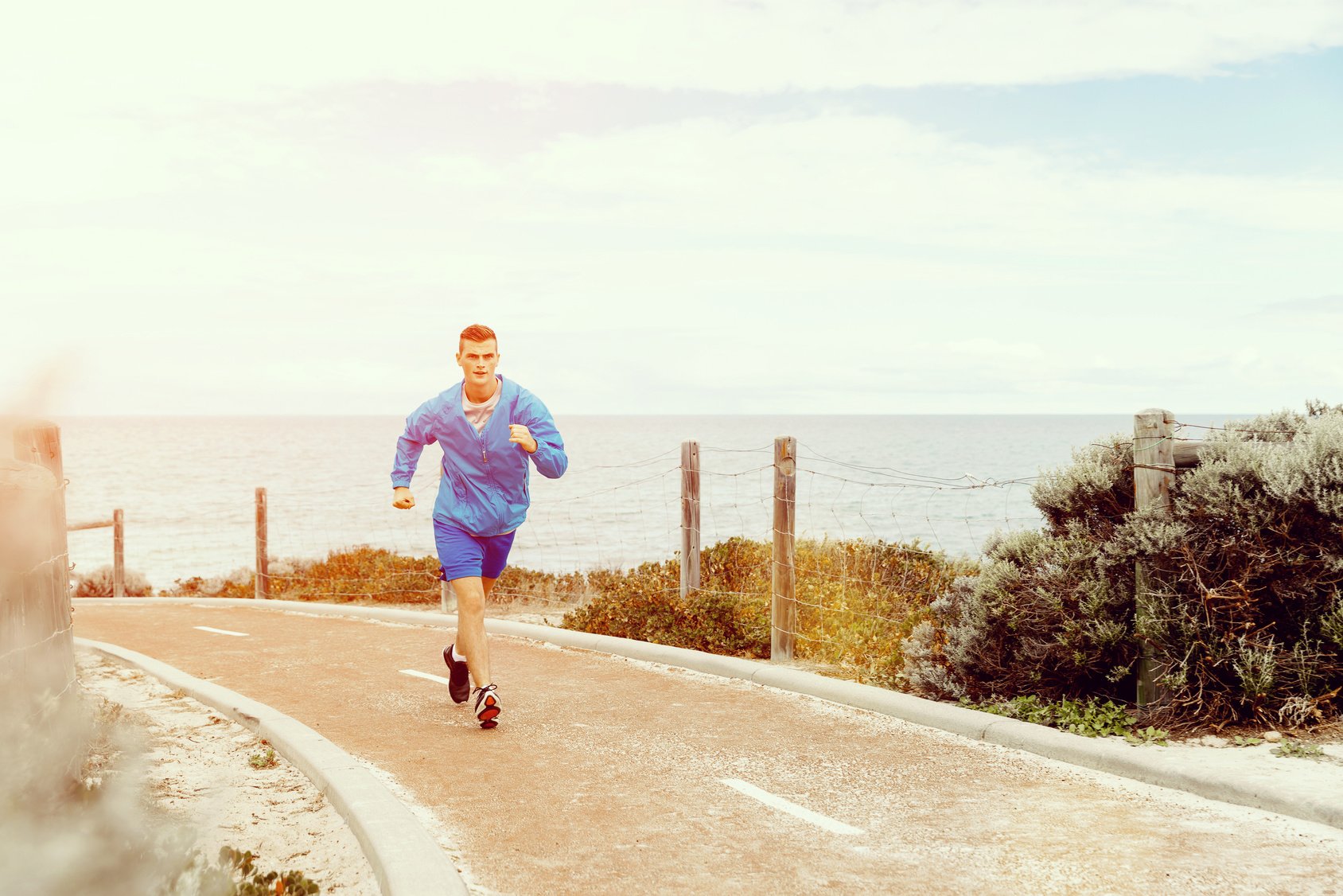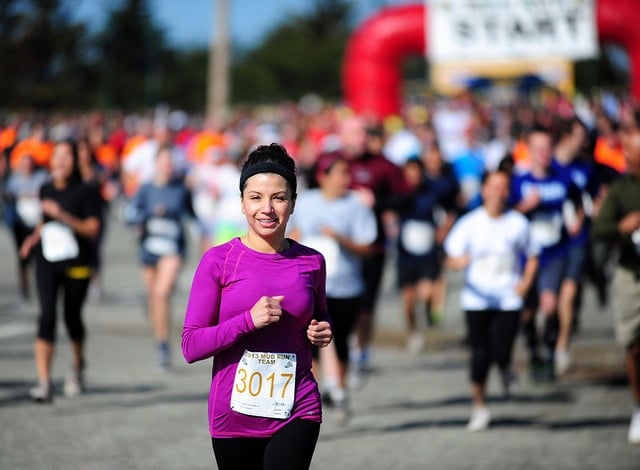Picture this: You’re jogging with friends at sunrise, music blasting in the background, strangers cheering you on, and everyone’s wearing something ridiculous—tutus, wigs, maybe even banana suits.
That was me during my first fun run in Bali.
I wasn’t chasing a time. I wasn’t counting kilometers. I just wanted to laugh, sweat, and maybe snag a coconut water at the finish line.
But let’s back up—what even is a fun run?
It’s exactly what it sounds like: a run that’s all about having a good time.
No stress. No pressure. No “you must finish this in under 25 minutes or else…” stuff.
According to the definition on Wikipedia, a fun run is a friendly race done more for the experience than for any official finish time.
Think of it like a party—except instead of dancing, you’re moving forward one step at a time, in a pack of smiling people who probably couldn’t care less what your pace is.
Most fun runs are short, often around 5K (that’s 3.1 miles if you don’t speak metric). Perfect for beginners or anyone who just wants to move their body without worrying about split times.
Fun Runs Are Where New Runners Fall in Love with the Sport
I’ve coached a lot of people in Bali who swore they’d “never run unless something was chasing them.”
Guess what finally got them moving?
A fun run.
The best part?
These events don’t care how fast or slow you are.
You’ll see joggers, walkers, stroller-pushers, even people dancing through the route. There’s zero judgment.
What You Can Expect
Most fun runs come with a theme.
Maybe it’s a color run—you know, the ones where volunteers toss powdered paint on you at every kilometer. Or a mud run, where you’re slipping through obstacle courses like you’re training for a military boot camp.
Maybe it’s a superhero run or a glow-in-the-dark night run with neon paint and glow sticks. I’ve even seen barefoot beach fun runs in Bali where everyone finishes with sand between their toes and flowers around their necks.
The whole vibe is electric.
It’s like running through a mini street festival.
One of my friends once said, “It felt like jogging through a music video.”
And they’re not just about having fun—they’re also about doing good.
Most fun runs support a cause. Local sponsors often chip in, and the entry fees go toward charities.
So yeah, you’re moving your body and helping others. That’s a pretty sweet combo if you ask me.
My First Fun Run in Bali
My first one was a color run by the beach. A buddy of mine dragged me into it, swearing it’d be a good laugh.
I was skeptical. I didn’t see how running + powder + strangers = fun.
I showed up wearing plain white gear.
That was the trick—you start in white so the colors show up better. Five minutes in, I looked like a walking rainbow.
Every kilometer, someone threw a new color at us. By the finish line, I was pink, green, blue, and covered in sweat.
I looked ridiculous. And I couldn’t stop laughing. It wasn’t a race. It was a moving party.
That moment stuck with me.
It reminded me that running doesn’t always have to be serious. Sometimes, it’s about letting loose and just being part of something joyful.
How Far Is a Fun Run?
Let’s answer the big question: How long is a fun run?
Short answer: not very.
Most fun runs are beginner-friendly and hover around the 5K range.
If you’re moving at a light jog, that’s maybe 30 minutes.
Walking it? Could take an hour, especially if you’re snapping selfies or stopping for a snack.
Some events offer even shorter options—like 1K or 3K for families or kids.
Others throw in a 10K if you’re feeling spicy. For example, we’ve had night glow runs in Bali that stretch out to 10K, and charity walks for local villages that keep it to 3K.
Who Can Do a Fun Run?
Short answer? You. Anyone.
You don’t need to be fast.
You don’t need to be fit.
Hell, you don’t even need to call yourself a runner.
Fun runs are built for everybody. I mean that—every body type, every background, every level.
If you’ve never jogged more than a block in your life, that’s fine. If your buddies are going and you’re on the fence, just say yes. The whole point is showing up and having fun.
I remind beginners all the time—fun runs are about joy, not pace.
You can jog, walk, skip, crawl, whatever. No one’s judging. In fact, most fun runs want you to go at your own rhythm.
One of my clients once said, “I only ran the first kilometer and walked the rest, but I still felt like a rockstar.” And honestly? She was one. She showed up. She finished smiling.
Don’t worry about speed.
I’ve seen 8-year-olds fly past adults and 80-year-olds cross the line hand-in-hand.
I once watched two retired neighbors walk the entire course side by side, laughing the whole way. They were the last to finish—but got the loudest cheers.
Fun runs aren’t about crushing the clock.
They’re about showing up and doing something good for your body and your community. That’s the real win.
Types of Fun Runs: What’s Your Flavor?
Let’s be real—fun runs aren’t boring. There’s a version out there that matches your vibe. Here’s the rundown:
Color Runs
Pure chaos—in the best way.
Volunteers toss bright powder at you every kilometer until you look like a walking rainbow.
These are perfect for families or first-timers who want more party than race【runnersblueprint.com】. And yes, your photos will be ridiculous (and awesome).
Costume & Theme Runs
Ever seen a herd of people dressed like superheroes or unicorns sprinting through the streets?
Welcome to themed runs.
From Santa suits in December to Halloween zombies in October, these events are all about dressing up and letting go. Once, I ran as a panda. Don’t ask.
Obstacle & Mud Runs
Think climbing walls, crawling under nets, sliding into mud pits. These are tougher but still fun-focused.
Events like Tough Mudder mix low-pressure challenges with high-energy fun.
You’ll get dirty, sore, and maybe earn a few scrapes—but you’ll also feel like a total beast when you finish.
Charity & Community Runs
Feel-good runs with purpose. Your entry fee might help fund a local school, hospital, or community cause.
You often get a T-shirt or medal—but the real reward is making a difference.
Even a 3K walk here helps. I’ve done glow runs in Bali that raised money for beach cleanups, and it’s a beautiful mix of sweat, smiles, and support.
Neon & Glow Runs
Party meets pavement.
These runs usually happen at night under blacklights with neon paint, glow sticks, and DJs.
You wear white and light up the dark. I’ve run these on the beach in Bali—neon glow on one side, ocean waves on the other. Magical.
How to Get Ready for a Fun Run (Without Overthinking It)
Look, fun runs are meant to be fun—but a little prep can help you enjoy the whole thing without feeling like you’re dying halfway through.
You don’t need to train like you’re going to Boston. Just a bit of movement before race day makes a big difference.
🔹 Get Moving Ahead of Time
You don’t need a fancy plan. Just get your legs used to moving.
Try this: Go for a walk or light jog 2–3 times a week. If you’re starting from the couch, alternate 1 minute jogging with 2 minutes walking. Do that for 15–20 minutes per session. Each week, bump the running time up a bit.
It’s not about pace. It’s about reminding your lungs and legs what movement feels like. Trust me, that first fun run feels way better when your body’s not in total shock.
Coach’s Tip: If you’ve already been training a little, treat the fun run like a light workout. I once jumped into a color 5K just for laughs and ended up setting a personal best—while getting blasted with pink powder.
So yeah, go for it—but don’t push too hard if you’re new. It’s a test run, not an exam.
🔹 Run with Your Crew (Optional, But Fun)
If you signed up with friends, try jogging together a couple times before race day. It makes the whole thing way less intimidating—and way more fun.
You can even test out your silly costume ideas or practice taking mid-run selfies (yes, that’s a thing). In my Bali running club, we sometimes jog at sunrise and it feels like the miles fly by when you’re laughing with people.
🔹 Know the Plan
Race day can be chaotic, so don’t wing it.
- Know where the event starts.
- Figure out how you’ll get there.
- If it’s early, plan to wake up with the sun (and maybe have a strong coffee).
- Check the weather: in Bali, it’s hot even at dawn, so light gear is best. In colder places, dress in layers you can tie around your waist if you heat up.
- Check if there are water stations. If not, carry your own bottle.
What to Wear (And Not Regret Later)
Let’s talk gear—because fun runs aren’t your typical race.
Clothes
Wear stuff you don’t mind getting messy.
For color runs, white shirts are a classic. Just don’t wear your favorite one.
I learned the hard way: Wore my best shirt to my first color run, and it came out looking like a tie-dye disaster. Now I have a go-to “fun run” shirt just for events like this.
If it’s a muddy or themed run? Dark old shorts and something lightweight. If costumes are your thing, go wild—tutus, superhero capes, or even just some fun socks can turn heads.
Eye & Mouth Protection
Color runs can get dusty. A cheap pair of sunglasses and a neck gaiter or bandana can help keep powder out of your eyes and mouth.
I never forget my old shades now. Better safe than spitting pink dust for the next two days.
Sun Protection
If your run’s outdoors—and most are—don’t mess around with the sun. I always bring a hat or visor and slap on some sunscreen. Especially in Bali. Even early runs here can burn you if you’re not careful.
Shoes
This one’s important. Wear a reliable pair of running shoes—but not your best ones if things are gonna get messy.
I once destroyed my favorite shoes at a color run. Powder got in every crack and turned them into a pastel disaster. Now I keep an older pair just for fun runs.
Mud run? Trail shoes are great. Just make sure your shoes are broken in—you don’t want blisters stealing the spotlight.
Accessories
Some runs have live music along the route, so you may not need headphones. But check the rules first—some events ban them for safety.
A small running belt for your phone, keys, or snacks is helpful too. And if it’s cold at the start, throw on a hoodie or gloves you can ditch later.
And don’t forget your biggest accessory: your smile.
Race Day: What to Expect and How to Crush It
Get There Early
Aim to show up an hour before the start. Gives you time to:
- Pick up your race bib or packet
- Use the restroom (lines can get long)
- Stretch out
- Join any warm-up party stuff (some events have DJs blasting tunes and group dances)
In Bali, we always snap a big selfie under the start arch and high-five everyone like we just won the Olympics—before the run even starts.
Warm Up & Stay Hydrated
Jog in place. Swing your arms. Shake off the nerves.
Drink a little water—but not so much that you’re sloshing. Most events have water stations, but if you run hot (or it’s tropical like Bali), carry a small bottle.
Start Easy
This isn’t a race to win. Don’t rush to the front.
Stick with people at your pace. If you’re slower, starting at the front might even be easier—less chaos. When the music drops and the countdown starts, ease into a comfy rhythm.
During the Run: Soak It All In
Smile.
Dance.
Take in the madness.
Some fun runs have live bands, cheer stations, even foam machines.
If there’s a DJ booth along the route, feel free to break into a little groove.
Take silly pics. Hug a friend. Be present.
If you want to walk, walk. Just step to the side so others can pass safely. I tell my clients all the time—“This is the one run where stopping to pose with a dinosaur in a tutu makes total sense.”
The Finish Line = The Start of the Party
Cross that finish line and let the good vibes roll.
Most events celebrate hard: music, confetti, color throws, maybe even a foam party. In Bali, one run ended with reggae music and coconut drinks—I was drenched in sweat, color, and joy.
I stuck around with friends, met new people, and felt like a kid again. That’s the real finish line reward. Not a medal (though you might get one), but the memory.
Post-Run Vibe Check
- Take pics with your crew.
- Laugh about how wild you looked mid-run.
- Celebrate the fact that you showed up and did something awesome.
I’ve seen strangers become friends over shared sunburns and splattered shirts. And no one ever brags about their finish time at a fun run—because that’s not what it’s about.
Final Thoughts: Why This Matters
Fun runs are more than just colorful chaos. They’re a chance to fall in love with running without pressure.
You get to sweat, smile, and maybe change how you think about fitness. One event. One step. One good memory at a time.
So if you’re still reading this wondering if you should sign up… yes. Yes, you should.
Grab a buddy. Pull out your weirdest socks. Show up. Run happy.
You’ll get more than a race—you’ll get a story.
Your Turn:
👉 Got your first fun run on the calendar?
👉 What’s your costume going to be?
👉 Tag a friend who should be doing this with you!









